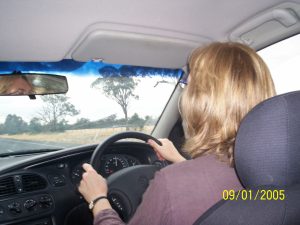
The 2005 Road Trip. Ruth Driving From Brisbane.
Rated ‘M’, for mature audiences.
Wednesday, 16 March 2022
What is it all about?
INTRODUCTION
From Armidale to Newcastle
Start Odometer: 15557
Finish Odometer: 15945
Distance: 408 km
Still half tank (much downhill breaking – makes more use of the electric engine). Fill tank at Newcastle.
Hours on road: 8.5 (0830 AEDT-1500 AEDT)
Music Album Road CD:
Moby’s Reprise.
Robert Plant’s Digging Deep: Subterranea
Steve Hackett’s The Tokyo Tapes
This road trip was a twelve-day business-leisure journey of cathartic-therapeutic-life accounting experience, with seven actual days on the road in the vehicle, 2016 TOYOTA CAMRY ATARA S AVV50R SEDAN 421AA2, owned by the driver, fully insured and no debts.
The business purpose was the delivery of a paper at the 2022 Evangelical History Association (EHA) Conference, at Alphacrucis College, Paramatta NSW, called, “Evangelicals & Nation-Building: Radical and Transformational Criticism from Across Christian Traditions in Queensland History.” Associated with that purpose was an opportunity for further research while staying in Parramatta for six days.
The age of the vehicle is the number of years since my lover, wife, and life companion, Ruth Elizabeth Buch (nee Lohmann) has been dead, passing from a brain cancer, Glioblastoma. The Road Trip was a Memento mori (Latin for ‘remember that you [have to] die’). The absence of Ruth was, for me, Memento mori in particular sense, the sense that death is part of the living in the absence of lost love and expecting to pass into non-existence at any moment of the journey. Road trips are dangerous, and it was in my mind continuingly, although not constantly, that I would not make it home.
The ‘Great Journey we Wanted’ was the anticipation Ruth and I had, as a couple, that when the girls grew up, we would have our grey nomad moment of time, travelling on our senior road trips. This was well before Ruth knew she was going to die in 2016. Some years before in the early diagnosis, we had thoughts of international or interstate travel, but being dirt poor, we settled for local-regional holidays instead. The awful twist in the tale is that it was the death of our loved ones – Ruth and my parents – which put me on the financial footing over the last five years, which allowed me to afford this road trip. It is the road trip that Ruth never knew, but the one when she haunted me in her absence, yet still hearing her voice.
THE STORY CONTINUES…
- About Ruth.
I woke, as expected, in a strange bedroom, not of a lover next to me, but where I was the night before. I was hungry in more ways than one. Like a dog chasing cars.
A Song by Snow Patrol
We’ll do it all
Everything
On our own
We don’t need
Anything
Or anyone
If I lay here
If I just lay here
Would you lie with me and just forget the world?
I don’t quite know
How to say
How I feel
Those three words
Are said too much
They’re not enough
If I lay here
If I just lay here
Would you lie with me and just forget the world?
Forget what we’re told
Before we get too old
Show me a garden that’s bursting into life
Let’s waste time
Chasing cars
Around our heads
I need your grace
To remind me
To find my own
If I lay here
If I just lay here
Would you lie with me and just forget the world?
Forget what we’re told
Before we get too old
The Snow Patrol song was a favour of Ruth’s. Sometime in her late 40s, when we were at Mill Park, I recall Ruth’s delight at being presented with a couple of Snow Patrol CDs. It was odd, this musically turn of Ruth’s. It was usually me who preferred a piece that was heavy and profound, with Ruth it was something more popular. At this stage of life, Ruth’s musical insights were more seriously and niche. I found it too ‘heavy’ at the time. In another blog, I’ll comment on Ruth’s love of opera in her dying days. But these days were all well past, and here I laid in the bed of the Country Comfort Armidale, at 0730 AEDT. To satisfy something of my hunger, I walked down Faulkner Street for breakfast at Seesaw Coffee: eggs, bacon, and toast, with strong coffee for the day ahead ($10.50).
By 0900 AEDT I was back on the road south. The climb out of the Armidale township, semi-circling the one or several of the contours until the top of the range was fascinating, as I passed the elite schools at 40 km per hour. Homage to another spoilt generation who become no friends to ‘higher education’ and lifelong learning, whether one is inside or outside the universities. It is appropriate that New England University is located at the top of the range, with the township well below in the valley, at times hidden in mist and clouds. You get the picture, but it is not a comment about the nature of higher education but of the condition of Australian universities in the arts and humanities, and even the social sciences. To be sure, there are those of us, inside and outside of the university, scholars first and employed/contracted workers second, who are achieving great things in the mystical land of higher education. It is only that, as Hegel stated about the Owl of Minerva.
The scene is brighter, speeding hedonistically down the New England (A15) highway. The fresh morning, the strong sunlight bringing out the colours of green and a goldish yellow, the national colours, and also bringing out a sunburnt face late in the day. I hear Ruth’s voice.
A Song by Moby
One of these mornings
Won’t be very long
You will look for me
And I’ll be gone
One of these mornings
Won’t be very long
You will look for me
And I’ll be gone
One of these mornings
Won’t be very long
You will look for me
And I’ll be gone
One of these mornings
Songwriters: Richard Melville Hall
One of These Mornings lyrics © Richard Hall Music Inc
I feel happy and yet so sad, a tear in my eye as I write this entry, many days later. Today, 1 April 2022, April Fool’s Day, is Ruth’s day of birth in 1961. 55 years of birthdays, and no more.
A Song by Robert Plant
What is this land, that I have found
Bitter silence all around
It’s the anniversary
Feel the fear, and sad defeat
Keeps my fragile haunted peace
On the anniversary
Through these dark and lovely streets
Drag my ragged defeat
It’s the anniversary
The anniversary
It’s the anniversary
How far is hate,
away from this
Reluctant heated kiss
On the anniversary
The anniversary
The anniversary
Ooh
I don’t want to feel your kiss no more
Songwriters: Phil Johnstone / Robert A Plant
Anniversary lyrics © BMG Rights Management, Sony/ATV Music Publishing LLC
And yet, what the Owl will reveal to the ignorant is that the tragic-at-heart do know joy. Those who too readily dismiss Schopenhauer and Hegel for the sense of the tragic fail to comprehend the joy of learning the deeper truths in life. Fools, who simply just want to live in the surface of it all. And the journey has only just began for this old fool.
My pace is slowing down from what was the day before. We get into habits of driving ourselves, and I realised that we do not need to be at the top speed, at every moment pushing the limit. There is a pace to life, and a different pace in different stages, and different contexts. At a slower speed you can take in the landscape, naturally, culturally, and intellectually. You notice ribboning of the hills, the stark mountain vista, the depth of the creeks and gullies, outcrops of boulders and other shaping’s which mark the landscape. And yet when we are relaxed enough to do so, there is the pressing need to get to the next town, the next toilet stop, and the next stop to satisfy one’s hunger and thirst.
A Song by Robert Plant
On my mind
All my talk
From the lips of so many memories,
Sun, beaks the cool
Are you lost without a clue?
Stars still shine
Winds will howl
All my friends (Oh, my friend)
Sense you now
Now. Strange, so very strange
Ooh, yeah On my mind
All my talk
From the lips of so many memories,
Sun, breaks the cool
Are you lost without the clue?
Remain divided, we had our day
The help provided the sad display
Hello hello, hello I saw you once before
In my dreams you’ve come to call
You are my friend, you are my friend
You touch my soul Ooh, ooh,
Songwriters: Christopher Blackwell / Oliver Woods / Philip Merriam Johnstone / Robert Plant / Stephen Charles Jones
Memory Song (Hello Hello) lyrics © Concord Music Publishing LLC, Sony/ATV Music Publishing LLC
So, I am again at the Tamworth Regional Playground, driving into the carpark at 1000 AEDT. The last time I was here, was with the family in 1998 when the landscape was completely strange to us. We were on our second day on the journey to our new life in Melbourne, and where Margs would be born to complete the family grouping. We had never been this far south off the coast (‘sub-coastal’ was term used in the last blog piece). The Peel River flows about 420 km (260 mi) north of Sydney on the New England Highway, and 280 km (170 mi) inland on the Oxley Highway.
Tamworth is situated at a narrow point on the Peel River floodplain, nestled at the base of the Wentworth Mounds, a spur of the Moonbi Range, where the Northwest Slopes rise to the Northern Tablelands. The elevation is around 400 m (1,300 ft) AHD. The Peel River runs southeast to northwest through Tamworth. The main city centre is on the northeast bank, between the river and the Wentworth Mounds, which rise to heights of 800 m (2,600 ft), towering over the city. This is the location of the rest stop.
The Kamilaroi people, from whose language comes the word ‘budgerigar,’ were there in a ‘natural’ state, when in 1818, John Oxley passed through the Peel Valley. In 1831, the first sheep stations and cattle stations were formed, and was soon followed by the Australian Agricultural Company which was granted a lease of 127,000 hectares (310,000 acres) of land at Goonoo Goonoo, south of the present location of Tamworth, extending to present-day Calala.
Song by Moby
I’ll use a lock that has no key
Bind you with chains
No one else can see
Let the water creep over your face
I’ll send it in waves
Just to watch you perform the great escape
How long can you hold your breath?
While you hold mine again and wait?
Just to watch you perform the great escape
I’ll pull your arms tight behind you back
Use myself as a weight
And wonder while you fade
How long can you hold your breath?
While you hold mine again and wait?
Just to watch you perform the great escape
Songwriters: Maria Diane Taylor / Orenda Fink / Moby .
Great Escape lyrics © Chrysalis Music, Richard Hall Music Inc
We need to escape to strange lands, and where the emotion floods in waves. White soul loss and Aboriginal deaths. In the 1830s, a company town began to develop on the Peel’s southwest bank, the present site of West Tamworth. In 1850, a public town was gazetted on the opposite side of the river from the existing settlement. This town became the main town, called ‘Tamworth’ after Tamworth, Staffordshire, represented at the time in parliament by the famous Robert Peel, founder of the UK Metropolitan Police Service. On 9 November 1888, Tamworth became the first location in Australia to have electric street lighting powered by a municipally owned power station, giving the town the title of “First Town of Light”. With Peel as one of the global founders of the modern Conservative Party, in this location you have the combination of innovation and nationalistic nostalgia. Tamworth is famous as the “Country Music Capital of Australia”, annually hosting the Tamworth Country Music Festival in late January; the second-biggest country music festival in the world (after Nashville). Perhaps, the beauty of country music is how the sentiment of the sound captures the emerging of innovation and nostalgia.
Tamworth is the administrative centre of the North-Western region of New South Wales, Australia. It is the largest and most populated city in the North-Western region, with a population of 42,872 in June 2018, making it the second largest inland city in New South Wales. Tamworth is 318 km (198 mi) from the Queensland border, and it is located almost midway between Brisbane and Sydney.
Image: Tamworth Bicentennial Park
Memorial to the Australian Light Horse, Tamworth, NSW. This bronze statue was sculpted by Tanya Bartlett of Newcastle. Constructed at a cost of $150,000 it was funded by grants from Federal and State Governments, Tamworth Regional Council, Joblink Plus and donations from business houses, property owners, RSL Sub-Branches and the community.
Source: Cgoodwin – Own work
Ruth is quiet this morning, as I returned to the road, and in spite of the flood of memories. There are sounds of silence in the breaks between the road trip CDs playing at various volumes, depending on my mood. It combines thoughts of Ruth, the City that shaped me, and the strange land of ‘the country.’
A Song by Disturbed
Hello darkness, my old friend
I’ve come to talk with you again
Because a vision softly creeping
Left its seeds while I was sleeping
And the vision that was planted in my brain
Still remains
Within the sound of silence
In restless dreams, I walked alone
Narrow streets of cobblestone
‘Neath the halo of a street-lamp
I turned my collar to the cold and damp
When my eyes were stabbed by the flash of a neon light
That split the night
And touched the sound of silence
And in the naked light, I saw
Ten thousand people, maybe more
People talking without speaking
People hearing without listening
People writing songs that voices never shared
And no one dared
Disturb the sound of silence
“Fools” said I, “You do not know
Silence like a cancer grows
Hear my words that I might teach you
Take my arms that I might reach you”
But my words, like silent raindrops fell
And echoed in the wells of silence
And the people bowed and prayed
To the neon god they made
And the sign flashed out its warning
In the words that it was forming
Then the sign said, “The words on the prophets are written on the subway walls
In tenement halls”
And whispered in the sound of silence
Songwriters: Paul Simon
The Sound of Silence lyrics © Paul Simon Music
Racing through the outcrops of towns, although at 40-50 km per hour, I was growing hungry again, but more to the point, travel was being weary, even in the second day. I decided to stop earlier than planned, now at 1130 AEDT. At the Post Office (LPO) in Wallabadah, I walked into the delightful ‘Best Coffee Outside of Italy’ (yes, that is the name of the establishment). I was reinvigorated with good coffee (‘best’ is pushing the claim). I savoured a tasty beef & chutney sandwich.
Wallabadah is located 55 kilometres south of Tamworth on the New England Highway and is in the Liverpool Plains Shire. It was originally known as “Thalababuri” by the Kamilaroi Aboriginal people. Wallabadah’s name was derived from an aboriginal word meaning ‘stone.’
The first European squatters arrived in the region in about 1830 and Wallabadah Station was established in 1835 on 44,000 acres (180 km2) of land. Australia’s first country racing club was established at Wallabadah in 1852 and the Wallabadah Cup is still held on New Year’s Day (the current racecourse was built in 1898). The Wallabadah Post Office opened on 1 October 1856.
Image: The church on the New England Highway, Wallabadah, NSW.
Source: Cgoodwin – Own work
A common attraction in these Australian country townships are totems to invasion-settlement. In 2005 the First Fleet Garden was created on the banks of Quirindi Creek. Near the historic Wallabadah Cemetery is one of the largest undisturbed whitebox woodlands remaining in Australia, along with the indigenous trees and grasses that are peculiar to these woodlands.
At the 2006 census, Wallabadah had a population of 746.
My original plan was to drive and stop in Wingen, a village in the Upper Hunter Shire, in the Hunter Region. You know that you are in the famous Hunter valley. Wingen comes from the local Aboriginal language, and means ‘fire.’
Image: Ol Church, Wingen, Upper Hunter, NSW, New England Highway, Wingen
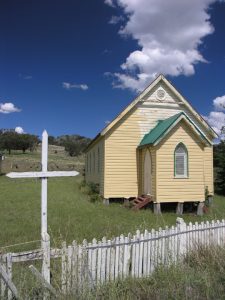
OLYMPUS DIGITAL CAMERA
Source: SeanMack at English Wikipedia
I did pause on the road in the area, at the Burning Mountain Rest Area. The Burning Mountain, according to scientists, is the world’s oldest known coal fire, and has been burning for approximately 6,000 years.
On the other side of the road is The Wingen Maid, a rock formation in the local Wingen Maid Nature Reserve which is said to resemble a woman when viewed from a particular direction. I did not see it. There are a few ‘hit and miss’ face pareidolia across the country. In my region, Tibrogargan, beside the Steve Irwin Way (old Pacific highway) looks like a gorilla in a particular direction, the eyes as deep gorges in the rock. Those eyes haunted me as a child on family road trips coming homeward.
- About Time.
A Song by Moby
All that we needed was right
The fresh hold is breaking tonight
Open to everything happy and sad
Seeing the good when it’s all going bad
Seeing the sun when I can’t really see
Hoping the sun will at least look at me
Focus on everything better today
All that I need and I never could say
Hold on people that slipping away
Hold on to this while it’s slipping away
All that we needed tonight
Are people who love us and like
I know how it feels to meant
Oh and we leave here, the seas
Open to everything happy and sad
Seeing the good when it’s all going bad
Seeing the sun when I can’t really see
Hoping the sun will at least look at me
Focus on everything better today
All that I need and I never could say
Hold on people that slipping away
Hold on to this while it’s slipping away
So long
So long
Open to everything happy and sad
Seeing the good when it’s all going bad
Seeing the sun when I can’t really see
Hoping the sun will at least look at me
Focus on everything better today
All that I need and I never could say
Hold on to people that slipping away (Repeat: x14)
Songwriters: Andy Kubiszewski / Christopher Hall / Walter Flakus / James eric Sellers
Slipping Away lyrics © Kobalt Music Publishing Ltd., BMG Rights Management
Time is slipping away. The sun does look at me as it burns my face. The beauty of a navigation system is that bears time in the space of the landscape as one travels. You plan stops on the map, but time slips away, and you do not stop and just travel-by. All you have is the scenery and a direction of travel.
Scone today is one such place; north of Muswellbrook about 270 kilometres north of Sydney. Pronounced as in ‘stone,’ and not as the English afternoon tea, Scone is in a farming area and also noted for breeding Thoroughbred racehorses. It is known as the ‘Horse capital of Australia.’ The annual Scone Horse Festival is a celebration of Scone’s cultural links to equines.
First inhabitants of the region were the Wonnarua & Gamilaroi Aboriginal Peoples. Allan Cunningham was the first recorded European person to travel into the Scone area, reaching the Upper Dartbrook and Murrurundi areas in 1823. Surveyor Henry Dangar travelled through the area, prior to passing over the Liverpool Range above Murrurundi in 1824. The town initially started as the village of Redbank in 1826, and in 1831 Hugh Cameron, a Scottish descendant put forward the name of Scone, gazetted in 1837.
Image: St Luke’s Anglican Church, Scone, NSW
Source: Cgoodwin – Own work
The town is home to very old pony clubs and a polo club, as well as the region for dairies and wineries. Scone was not all hedonist culture. One of the first educational groups to be established in New South Wales was a reading society called, The Scone Book Society, formed in 1841. Like many country towns in Australia, the reading society became the School of Arts, a Mechanics’ Institute, and library, which, in the case of Scone, occupied buildings in Kingdon Street (1873-1917) and Kelly Street (1924-1954). On my journey, these buildings still stand across the towns, and the cities, as a mausoleum to the fact that Australia was once a great educative nation.
Scone is the Terminus on the Main North railway line, and is served by the Hunter Line passenger service from Sydney. Roads northward into the valley and the range now serve where the old rail once took the journey to the Queensland border (further story in the last road trip blog). The town is connected to nearby Gloucester via Scone Road, which traverses the Barrington Tops, and is an important fact on my return journey.
At the 2006 census, Scone had a population of 4,624 people.
- About Landscape.
Although the passage takes me through many townships and time is slipping-by, the landscape stretches out with time to spare. You are met with wonder as you drive at 100 km per hour over the crests and through rolling hills. The view from the end of the range, and looking deep into the Hunter Valley is spectacular as it is dangerous on road precipice. It is like coming off Cunninghams Gap eastward but much longer. Indeed, the valley feels as if it continually descending towards Newcastle. Muswellbrook is 127 km (79 mi) north-west of Newcastle, and its seems to be familiar, even through I probably travelled through a few times. The reason is Donald Horne spent his early childhood in Muswellbrook and who wrote the first volume of his autobiography, The Education of Young Donald, which features an extensive description of life in the town in the 1920s and early 1930s. Over the past month I have been reading the voluminous Horne memoir.
The Wonnarua and Gamilaroi peoples occupied the land, which is now been given over to coal mining and horse breeding. The first European to explore the area was Chief Constable John Howe in 1819, with the first white settlement occurring in the 1820s. The township of Muswellbrook was gazetted on 23 October 1833. To the south, “Forbestown” was established by the sons of Francis Forbes in 1842; the name was changed in 1848 to “South Muswellbrook” to prevent confusion with the town of Forbes.
The present spelling of Muswellbrook has a disputed etymology. ‘Mussel Creek’ (now called ‘Muscle Creek’) was first named by a party of surveyors who found mussels in the small stream while camping along its banks in the early 19th century. There are two theories. The name derived from the Muswell Hill area of London, due to the influence of Sir Francis Forbes whose wife, Amelia, was born and schooled in that town; or that the name is a gradual corruption of the original gazetted name “Musclebrook”, eventually adopted as the official spelling due to common use.
Today, along with the black dust pollution, the region has developed a reputation for gourmet food and wine production. However, the Australian psyche is still entranced by the old technology. South of the Muswellbrook township are two coal fuelled power stations, Liddell and Bayswater. They were commissioned in 1973 and mid 1980s respectively and employ approximately 500 people from the area. There is something sad and black about the place under the hedonist veneer. The Steely Dan song ‘Black Friday’ from the 1975 album Katy Lied contains the lyrics of this disposition:
When Black Friday comes
I’ll fly down to Muswellbrook
Gonna strike all the big red words
From my little black book
Gonna do just what I please
Gonna wear no socks and shoes
With nothing to do but feed
All the kangaroos
When Black Friday comes
I’m gonna dig myself a hole
Gonna lay down in it
’til I satisfy my soul
Gonna let the world pass by me
The Archbishop’s gonna sanctify me
And if he don’t come across
I’m gonna let it roll
Songwriter Donald Fagen explained the lyrics in an interview with Paul Cashmere of Undercover Music; “I think we had a map and put our finger down at the place that we thought would be the furthest away from New York or wherever we were at the time”. For such flippant and sad references, the town has had several important cultural references. Tommy Emmanuel (born 1955), the virtuoso guitarist, was born in Muswellbrook, and Muswellbrook is also mentioned in Thomas Keneally’s book The Chant of Jimmie Blacksmith.
According to the 2016 census of Population, there were 12,075 people in Muswellbrook. Aboriginal and Torres Strait Islander people made up 9.3% of the population.
Throughout the New England and Hunter Valley journey, the faint yellowish Clive Palmer’s billboards of the United Australia Party (UAP; formerly known as Clive Palmer’s United Australia Party and the Palmer United Party, PUP) align the road periodically. It symptomatic of Australian politics in the Covid-19 years and its aftermath, and would be a mystery for the international readers. I have to explain that Clive Palmer is an Australian wannabee for Donald Trump, but not as politically successful. The big similarity to Trump, is that Palmer wastes his own millions on political lies, rallying to his billboard slogan, “Freedom, Freedom.” Unlike Trump to the American Republican Party, Palmer’s groundswell is limited to the neo-conservative hillbillies of the Australian political tradition. Even the traditional conservative force of the Nationalist Party finds Palmer’s politics idiocy, and it is for everyone except those obnoxious, hardhead, and uncaring libertarians. Its minority popularity is the seethe-ness of pet hates. It is the nastiness of ratbag talkback radio which can be heard flying down country and city roads.
Charlie Patton Highway (Turn it Up, Pt. 1)
Song by Robert Plant
On Charlie Patton Highway, the mist, the rain, the mud
Somewhere east of Tunica and I’m close to givin’ up
This car goes ’round in circles, the road remains the same
For help and consolation, I’ll hit that dial again
Turn it up
…I’m lost inside America, I’m turnin’ inside out
I’m turnin’ into someone else I heard so much about
I’m blinded by the neon, the righteous and the might
I’m stuck inside the radio, turn it on or let me out
Turn it up
Alone with disconnection and not a lonesome word
I reach out to the radio and the clinically disturbed
“Give it up” the man says, “Surrender and be saved”
He’ll drive away my demons, his help is on the way
So, turn it up
Turn it up
Oh, turn it up
A touch of serendipity, a little stroke of luck
The radio inside this car brings guidance from above
The smallest contribution will keep me in safe hands
I’m callin’ 1-800, I ain’t leavin’ it to chance
Turn it up
Songwriters: Robert Plant / Miller / Giovino
There is, however, in the UAP party name is a historical connection here between rabid Australian Far Right (although in the bubble denying the label) and the moderate conservative ethos in Australian culture. Originally, The United Australia Party (UAP) was an Australian political party that was founded in 1931 and dissolved in 1945, led by two Prime Ministers: Joseph Lyons (1932–1939) and Robert Menzies (1939–1941). At the time radicals, and the social liberals who did not share the nationalistic ideology of the UAP (and its emerged previous entities of the Nationalist and Australian parties), found the politics very old fashioned. However, at least, the very Catholic Lyons and very British Menzies, were for ‘The Forgotten People,’ a reference to the famous 1942 speech by Menzies, which hallmarked the end of the UAP and the founding of the Liberal Party. Palmer, in the last four years has been able to tap into that honourable nostalgia from the days of Lyon’s and Menzies’. However, Palmer represents the struggling industries of past – he is a businessman of iron ore, nickel, and coal holdings. The sentiments bite into Labor’s Hunter heartland of coal mining and the export industry. There are those in the Hunter Valley and the industry who can see ‘the writing on the wall’ and are attempting to turn the tide towards the prophetic innovation. Nevertheless, there are those in the Valley gullible enough to sallow Palmer’s Trumpian politics.
The traditional landowners of the land around what is now the town of Singleton are the Wonnarua / Wanaruah people. Singleton was established as a township in the 1820s. In its early years, it was also called Patrick’s Plains. The Main Northern railway line reached Singleton in 1863 and was the end of the line until 1869.
Singleton was subject to the major flooding of the Hunter River in 1955, causing extensive damage to the town. There was an alternative town at Whittingham in a flood-free area, but the habitual actions continued in the conservative mind (mentioned in the previous blog piece).
In June 2018, Singleton had an urban population of 16,346 person in the Singleton urban area. Aboriginal and Torres Strait Islander people made up 6.2% of the population.
Grizzley stories usually follow the highway. There are bushrangers, who stories will picked up in the last blog piece. The roots of the brutality traditionally have seen to go back to the nation’s ‘convict stain.’ It has been a controversial thesis among Australian historians, but cruelty and violence of penal convictism cannot be denied. What international readers often do not realise is that convicts were spread across the regions from Sydney Cove, Coal River, Port Arthur, and Moreton Bay. It was the start of the Australian tradition in cheap labour. In November 1833 six local convicts decided to revolt based on poor treatment with little provisions and floggings. The overseers were away from one of the Singleton properties at the time washing sheep, and the rebels took the opportunity to steal clothes, guns, food, and horses. The repercussions were devilish harsh in comparison to the evil deeds done. Five of six men involved the riots were sentenced to death. Flogging was routine in the absence of the death sentence handed out. God have mercy!
Image: Convent of the Sisters of Mercy
Source: Sardaka (talk) 08:58, 19 September 2011 (UTC) – Own work
By the time you reach the town of Maitland you have reached the Lower Hunter Valley of New South Wales. The river has been flowing with me down into the deep valley since Singleton.
The Wonnarua People were the first known people of the area with the land by the name ‘Bo-un’ after a species of bird. From around 1816, cedar logging parties from the convict settlement of Newcastle (Coal River) were the first Europeans to stay on the site. Governor Lachlan Macquarie visited the area in 1818, naming it Wallis Plains after Captain James Wallis who was commandant of the Newcastle penal colony at the time. In 1819, convict farmers were allowed to select land at Wallis Plains, the most notable of which was Molly Morgan. By 1821 the first British government buildings, consisting of a cottage and barracks, were constructed, and in 1823 James Mudie financed the construction of a wharf. Two years later William Powditch opened the first general store at Wallis Plains.
In 1829, assistant surveyor George Boyle White, officially laid out a township on the site of Wallis Plains. The village was called Maitland possibly in honour of Frederick Lewis Maitland. Due to population growth, Maitland was partitioned in 1835 into West Maitland (which was the original Wallis Plains settlement) and East Maitland. The nearby town of Morpeth developed at the same time from the Green Hills land grant given to Lieutenant Edward Charles Close, a Peninsular War veteran. Morpeth served as the head of navigation for larger ships (later, steamships), and goods were transhipped upriver to West Maitland on barges and smaller vessels. Originally the river route between Morpeth and West Maitland was 26 kilometres (16 mi), today after various floods and river course changes this has reduced to just 9 kilometres (5.6 mi).
There have been a few cultural history references, in the 20th century, which highlight the name ‘Maitland.’ The Silence of Dean Maitland (1934), based on Maxwell Gray’s 1886 novel of the same name. Although the film was shot on location in Camden and at Cinesound’s studios in Bondi, the plot associated with the country town behaviour as has come to be discussed in the last quarter of the century. In the day, though, discussion of the plot was not welcomed in the open. Cyril Maitland is a clergyman living in a small seaside town, who impregnates the beautiful Alma Lee despite being engaged to another woman. When Alma’s father Ben finds out about the pregnancy, he attacks Maitland and is killed in a fall. Mailtand’s best friend, Doctor Henry Everard, gets the blame, and spends twenty years in jail while Maitland’s career thrives. The director came into trouble with the censor but was able to overcome objections. The tide of social attitudes was turning and the film received second place in a 1935 Commonwealth film competition, winning £1,250. Another association in my work is that Michael Scott Fletcher (1868–1947), Methodist minister, foundation master of Wesley College, University of Sydney, and Professor of Philosophy at the University of Queensland, was once a notable resident.
Less fleeting for cultural connections is a few locations. The Maitland Jewish Cemetery in Louth Park, one of only two provincial Jewish cemeteries in New South Wales, is testament to the Jewish community that was active in Maitland up until the 1930s. The Immigrants Home was founded by Caroline Chisholm in East Maitland and was the first public building that was used to treat the sick. The site eventually became known as Maitland Benevolent Asylum.
Maitland’s proximity to the Hunter River has resulted in a succession of floods. Over 200 floods have occurred on the Hunter River since settlement, 13 of those higher than the river’s normal peak limit of 10.7 metres (35.1 ft). Of these 13, all have had a direct effect on the city of Maitland. Between 1830 and 1834 Maitland experienced five floods. The 1832 flood was severe with water reaching about 8.84 m (29 ft) and killing seven people. The 1834 flood water reached the same height. In the winter of 1857, the Hunter River rose again to record heights, reaching 9.2 m (30 ft). Flooding continued for the next 30 years with the floods of the 1890s being the most disastrous. Much of the riverbank collapsed and many people were left without homes or personal possessions.
Image: Maitland railway station in Flood, 1930
Source: Not Stated.
The 1955 Hunter Valley floods, also commonly known as ‘The Maitland Flood’, was the first Australian natural disaster to be broadcast by the media on an international scale. This flood is considered to be one of Australia’s worst floods. The waters reached 12.5 m (41 ft) and caused catastrophic damage. The volume of flood water was approximately 3,750,000 megalitres (8.2×1011 imp gal) and the cost of damage, in today’s currency, would have been over A$2 billion. Seven thousand buildings and homes were damaged, and the flood claimed the lives of 14 people.
According to the 2016 census, there were 78,015 people in Maitland. Maitland has an assault rate of 1,110.4 per 100,000 population, which is significantly higher than the NSW state average of 823.4 per 100,000 population. Aboriginal and Torres Strait Islander people made up 5.4% of the population. There are no statistical correlations which can be factually put, however, from the days of Coal River, violence has badly marked the landscape of the Hunter Valley.
- Life and Death and Recreation
Time shifts as I come onto the newish Hunter Expressway (opened 2014), a 39.5-kilometre (24.5 mi) long dual carriageway freeway from the Pacific Motorway at the Newcastle Link Road. It puts me back to the large city environment. As a mark of the occasion, I fill up my tank at the Coles Express in the Newcastle suburb of Wallsend. Getting into the inner city area of Newcastle is a challenge. Unlike the Pacific Motorway (M3) which leads into Brisbane City, the Newcastle Road (A15) appears to twist and turn in the driving experience, even though the maps show something straighter. There is also a sense of coming to the end of the day’s journey, and this plays on my mind.
Moby
In my dreams I’m dying all the time
Then I wake it’s kaleidoscopic mind
I never meant to hurt you
I never meant to lie
So this is goodbye?
This is goodbye
Tell the truth, you’ve never wanted me
Tell me
In my dreams I’m jealous all the time
When I wake I’m going out of my mind
Going out of my mind
Songwriters: Richard Melville Hall
Porcelain lyrics © Kobalt Music Publishing Ltd., BMG Rights Management
My Newcastle Stayover is at the Lucky Hotel in the famous Hunter Street, now with the featured modern light rail (tram) system. Very flashy and impressive ‘snakes’ with commercial colours, but as I leave Newcastle Road at 1640 AEDT, I struggle with the build-in navigation system, which has made no allowance for the tramway preventing me crossing the road to the Hotel on the other side. For the four years I have had my vehicle, I have had to put up with that voice that declares ‘re-calculation.’ “You can re-calculate, love, all you want,” I say, “but you will never get me to where I need to be.” As it was, there is no secure parking around the city hotel, so after I offload my packs in room ‘205,’ I secured the vehicle at First Parking in Argyle Street for overnight parking ($34.00).
Newcastle is the second most populated city in the state of New South Wales. It includes the Newcastle and Lake Macquarie local government areas, and is the hub of the Greater Newcastle area, which includes most parts of the local government areas of City of Newcastle, City of Lake Macquarie, City of Cessnock, City of Maitland and Port Stephens Council.
Located at the mouth of the Hunter River, it is the predominant city within the Hunter Region. Famous for its coal, Newcastle is the largest coal exporting harbour in the world, exporting 159.9 million tonnes of coal in 2017. Beyond the city, the Hunter Region possesses large coal deposits. Geologically, the area is located in the central-eastern part of the Sydney Basin.
Newcastle is on the southern bank of the Hunter River mouth. The northern side is dominated by sand dunes, swamps and multiple river channels. A ‘green belt’ protecting plant and wildlife flanks the city from the west (Watagan mountains) around to the north where it meets the coast just north of Stockton.
Newcastle and the lower Hunter Region were traditionally occupied by the Awabakal and Worimi Aboriginal people, who called the area Malubimba. The NSW Geographic Names Board have the traditional Aboriginal names, which include Nobbys Head also known as Whibayganba; Flagstaff Hill also known as Tahlbihn; Pirate Point also known as Burrabihngarn; Port Hunter also known as Yohaaba; Hunter River (South Channel) also known as Coquun; Shepherds Hill also known as Khanterin; Ironbark Creek also known as Toohrnbing and Hexham Swamp also known as Burraghihnbihng.
Image: Corroboree at Newcastle, ca. 1818 / oil painting by Joseph Lycett. Dixson Galleries, State Library of New South Wales.
Source: Joseph Lycett (1775-1828) – State Library of New South Wales DG 228
In September 1797, Lieutenant John Shortland became the first European settler to explore the area. He had been sent north in search of a number of convicts who had seized a locally-built vessel called Cumberland as she was sailing from Sydney Cove. While returning, Lt. Shortland entered what he later described as ‘a very fine river,’ which he named after New South Wales’ Governor John Hunter. Over the next two years, coal mined from the area was the New South Wales colony’s first export.
Newcastle gained a hellhole reputation being the place where the most dangerous convicts were sent to dig in the coal mines as harsh punishment for their crimes. In 1801, a convict camp called King’s Town (named after Governor King) was established to mine coal and cut timber. In the same year, the first shipment of coal was dispatched to Sydney. This settlement closed less than a year later.
A settlement was again attempted in 1804, as a place of secondary punishment for unruly convicts. The settlement was named Coal River, also Kingstown and then renamed Newcastle, after England’s famous coal port. Newcastle remained a penal settlement until 1822, when the settlement was opened up to farming.
The formation during the nineteenth century of the Newcastle and Hunter River Steamship Company saw the establishment of regular steamship services from Morpeth and Newcastle with Sydney.
The Port of Newcastle remains the economic and trade centre for the resource rich Hunter Valley and for much of the north and northwest of New South Wales. Newcastle is the world’s largest coal export port and Australia’s oldest and second largest tonnage throughput port, with over 3,000 shipping movements handling cargo of 95.8 Mt per annum, of which coal exports represented 90.8 Mt in 2008–09. The volume of coal exported, and attempts to increase coal exports, are opposed by environmental groups.
In the 2016 census it had a population of 322,278. The population of the city of Newcastle itself was 155,411 while Lake Macquarie was actually larger with a population of 197,371. Aboriginal and Torres Strait Islander people made up 3.8% of the population.
A Song by Moby
[with editing]
Oh Lordy, Lord, trouble so hard
Don’t nobody know my troubles but God
Oh Lordy, Lord, trouble so hard
Went in the room, didn’t stay long
Looked on the bed and my lover was dead
Went in the room, didn’t stay long
Looked on the bed and my lover was dead
Oh Lordy, Lord, trouble so hard
Don’t nobody know my troubles but God
Songwriters: Richard Melville Hall / Vera Hall / Alan Lomax
Natural Blues lyrics © Warner Chappell Music, Inc, BMG Rights Management
Ruth and I were married only a year and half when the infamous Newcastle earthquake happened. It is infamous because Australia regularly experience natural disasters of bushfires, floods, and pestilence, but city-destroying earthquakes are rare in the country. On 28 December 1989, Newcastle experienced an earthquake measuring 5.6 on the Richter scale, which killed 13 people, injured 162 and destroyed or severely damaged a number of prominent buildings. Some had to be demolished, including the large George Hotel in Scott Street (city), the Century Theatre at Broadmeadow, the Hunter Theatre (formerly ‘The Star’) and the majority of The Junction school at Merewether. Part of the Newcastle Workers’ Club, a popular venue, was destroyed and later replaced by a new structure. The following economic recession of the early 1990s meant that the city took several years to recover.
Nothing of that destructiveness is visible, here now in March 2022, as I take a short tram trip ($1) to the centre of the city and the Old Newcastle Train Station, a mausoleum for when passenger rail travel once took tourists right to the heart of the city. Southport, Queensland, is another example of such rail tourism. Trams are, however, are a good substitute, which were also part of the historic landscape. Like most Australian coastal towns and cities, there is the foreshore foot and cycle path, with parks and garden surround the slower paced journey. Fancy restaurants nudge the waterside around Queens Wharf, but it is Harry’s Café de Wheels which offer me the expensive-but-delightful Peas and Pastry ($10). In the quietness of late afternoon park area, I hear the quietness of Ruth.
Why Does My Heart Feel So Bad?
A Song by Moby
Why does my heart feel so bad?
Why does my soul feel so bad?
Songwriters: Richard Melville Hall
Why Does My Heart Feel So Bad? lyrics © Kobalt Music Publishing Ltd.
I had chosen to come to Newcastle from a journey I had done in 2019, before the pandemic. It was the start of the journey from the Charles Strong Symposium to the publication of our book, published in December last year, Charles Strong’s Australian Church: Christian Social Activism, 1885-1917 (MUP). I recall those days, not so long ago, as I walk the around the civic block of Newcastle with the City Campus. This was just before a later dinner at the Hotel (2000 AEDT). As I drink the wine and eat the burger, while penning in my notebook I reflect that Ruth never came to know Newcastle as I did. We did visit together during our Sydney-Lake Macquarie sojourn early in our married life, before children, however, that was a quick day trip with Ruth’s friends. Indeed, the friends were parent’s Ruth’s former, and Sydney-base, fiancé. I was very lucky that the dominance of the ‘Premier State’ and the country’s first city did not win out in that love affair. So Newcastle means something to me, very much, a victory in love for Ruth and I.
A Song by Robert Plant
Oh baby, can’t eat can’t sleep
Can’t understand a love song
Drive me crazy
‘Cause my feet won’t quit as I go slidin’ in the sweet zone
Round round like you want me to do
Down down like you’re beggin’ me to
The floor’s small and the wall’s too steep
I can kiss your mouth when I go to sleep
Oh, baby, got those personal moves so deep inside my move groove
I go crazy, my head won’t quit as I crawl inside your love groove
Down down like you want me to do
Round round like you’re beggin’ me to
The floor’s small and it’s much too steep
I can kiss your mouth when I go to sleep
I feel alright, ‘Cause my little girl wants to dance all night
What can I do I know my little girl wants to dance with you
Oh darlin’, come on baby, come on mess with me
Oh, woman, I’ll make it up to you, if you just drive me wild, child
Down down like you want me to do
Round round like you’re daring me to
The floor’s small and the wall’s too steep
I can kiss your mouth when I go to sleep
Songwriters: Philip Merriam Johnstone / Robert Plant
Promised Land lyrics © BMG Rights Management, Sony/ATV Music Publishing LLC
*****
Neville Buch
Latest posts by Neville Buch (see all)
- Dear grossly, ethically, corrupted - December 21, 2024
- Thoughts with a Professional History colleague on “Artificial Intelligence” - December 21, 2024
- Stephanie M. Lee on “AI by omission”, The Chronicle of Higher Education, Thursday, December 19, 2024 - December 20, 2024

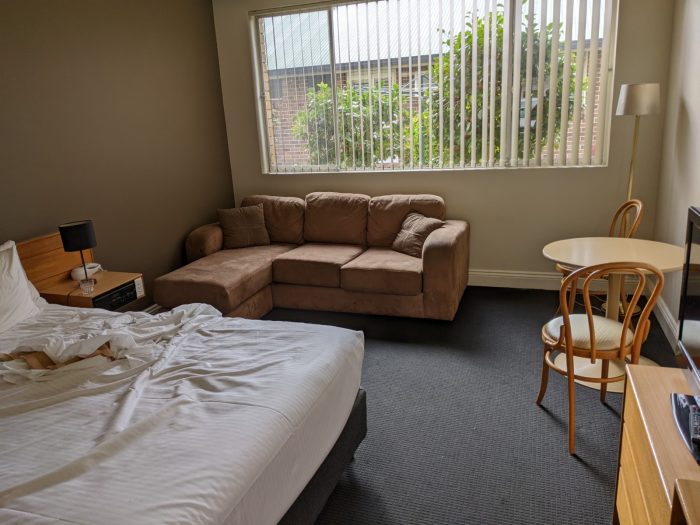
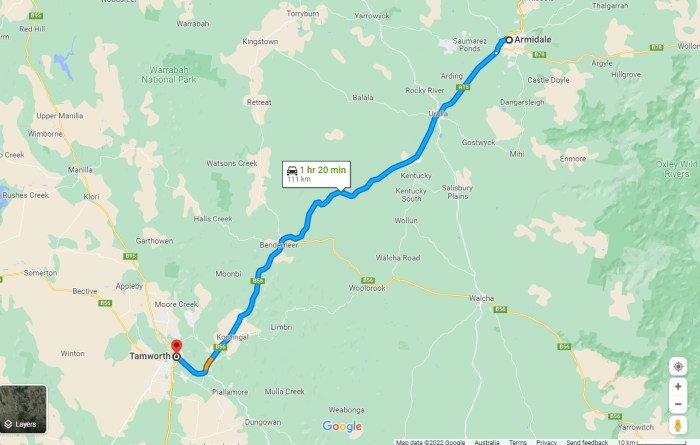
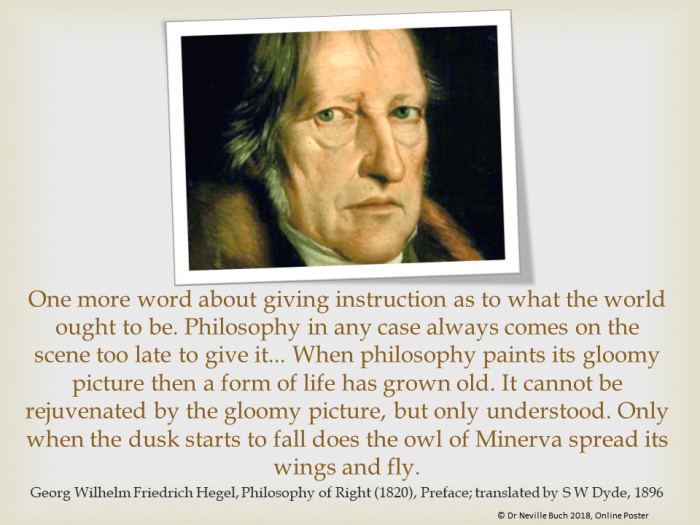
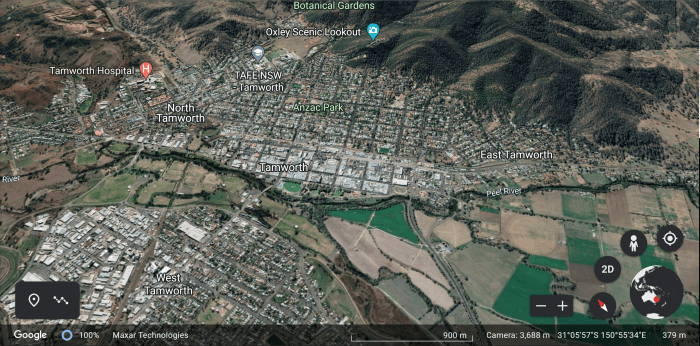
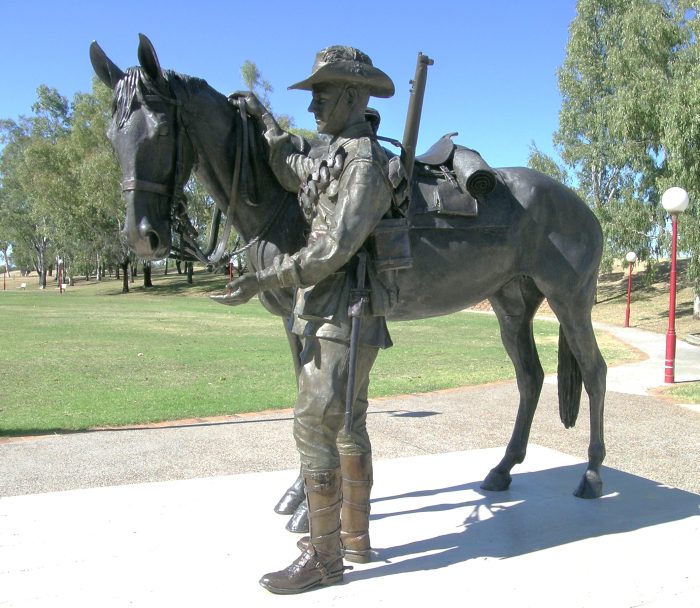
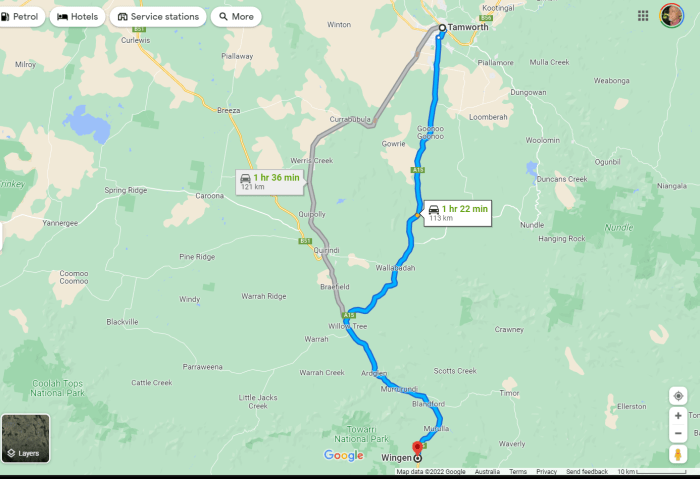
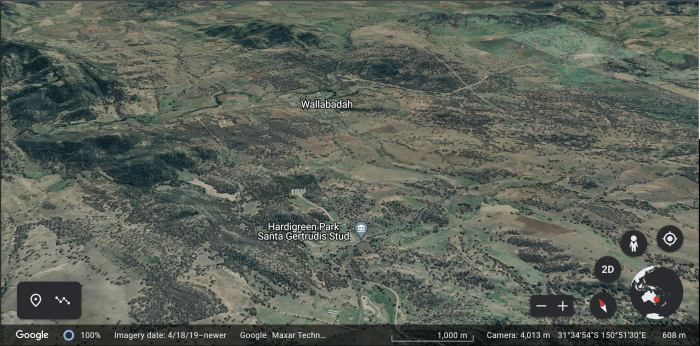
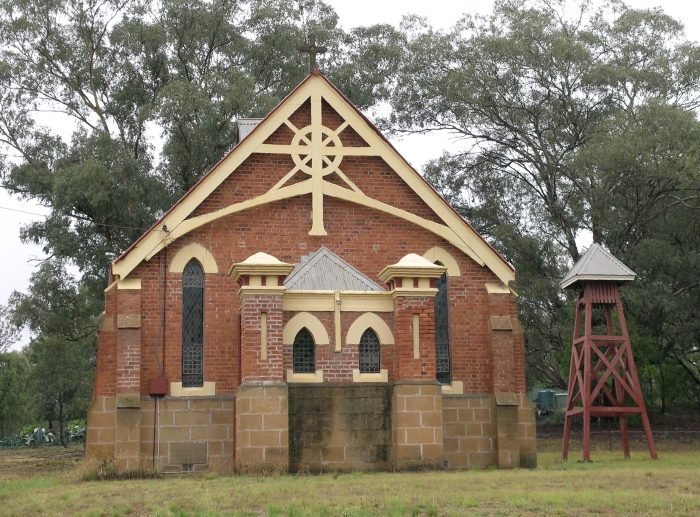
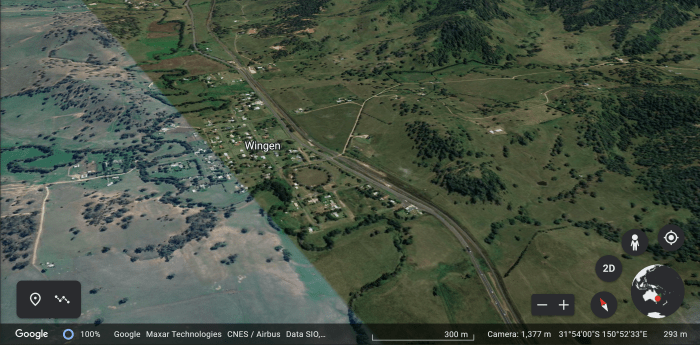
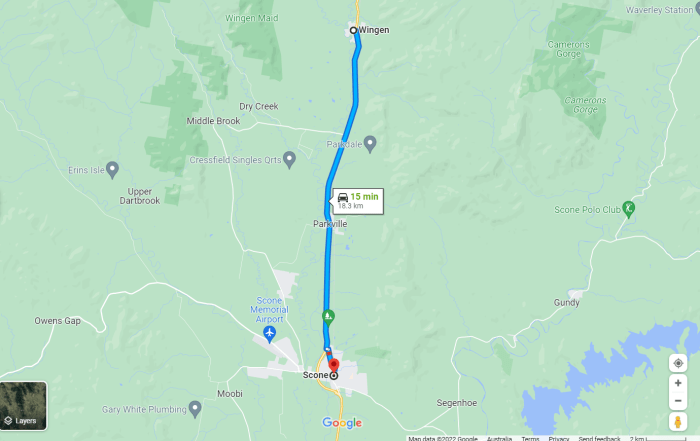
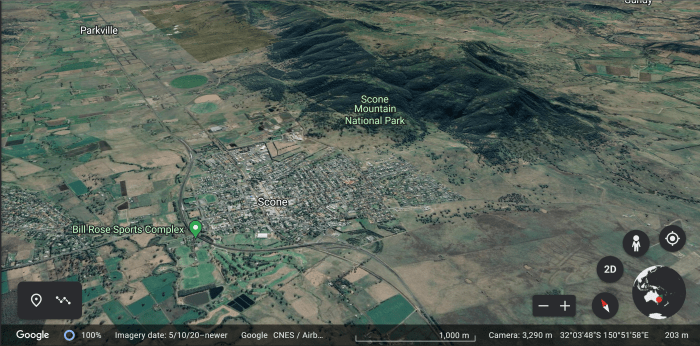
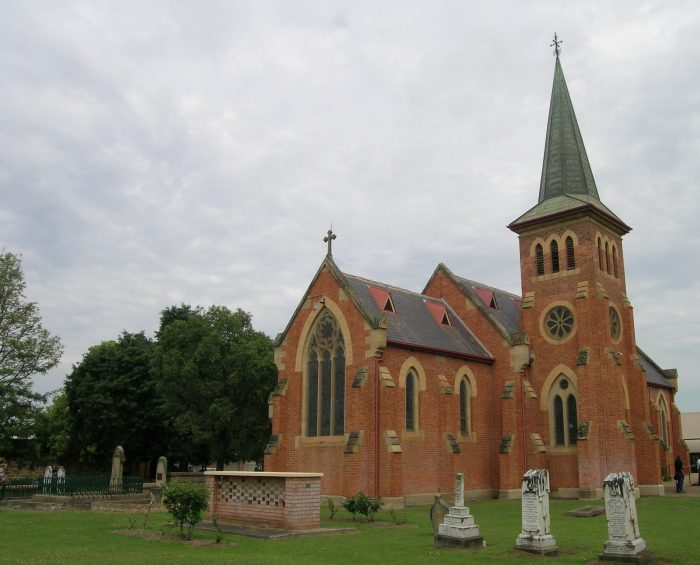
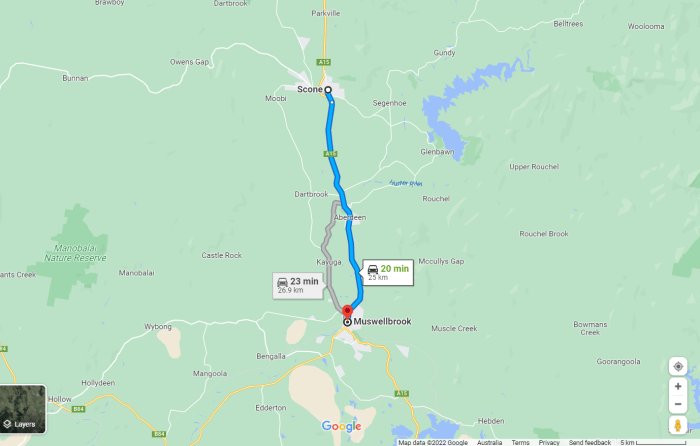
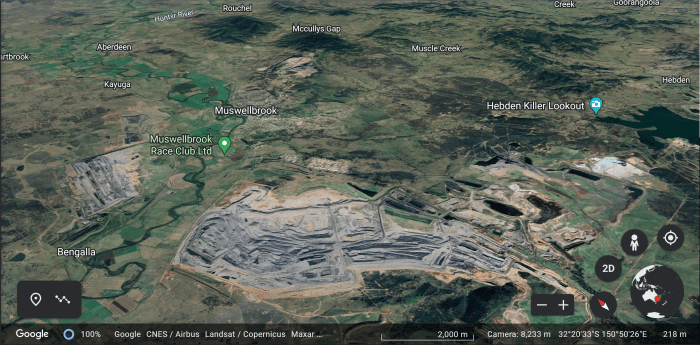

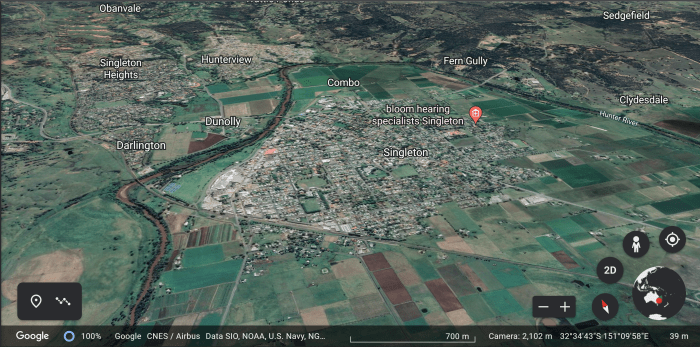
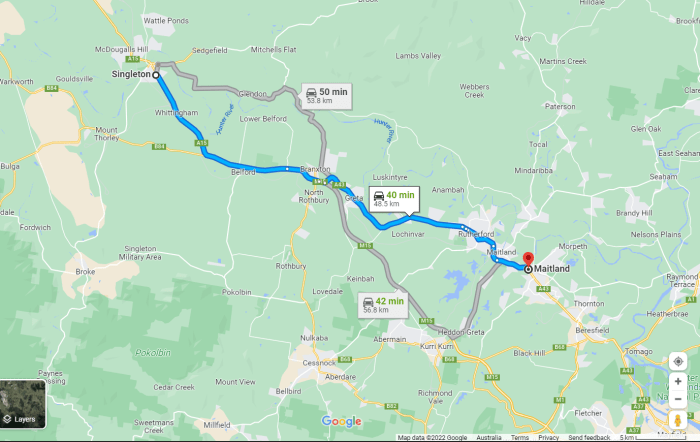
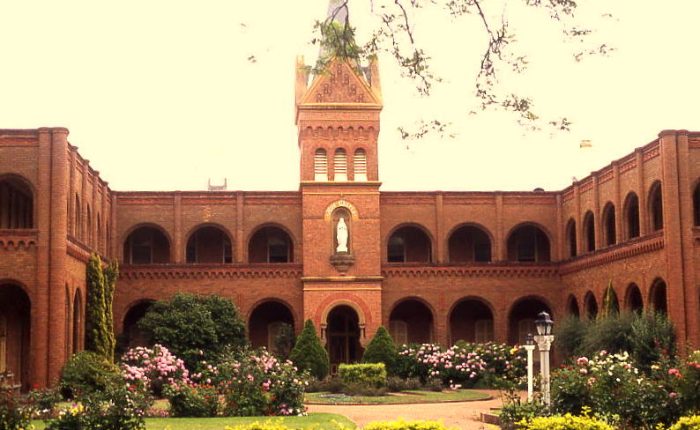
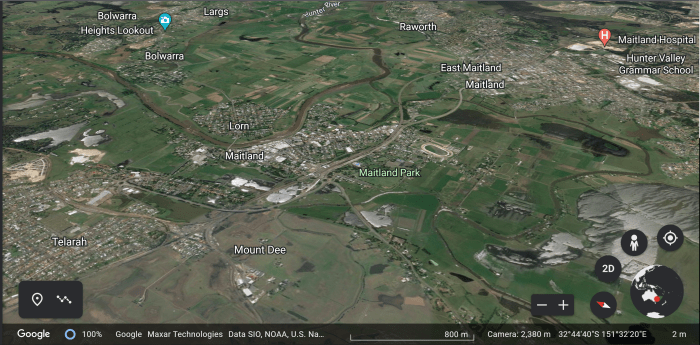

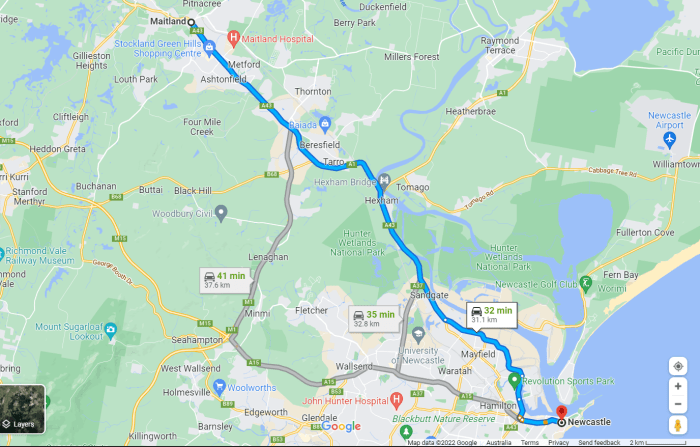
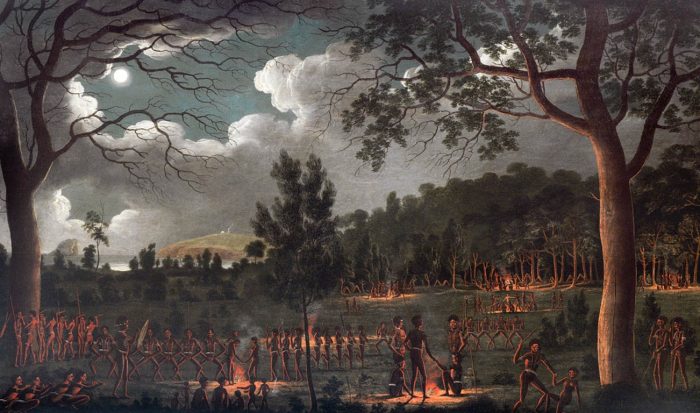
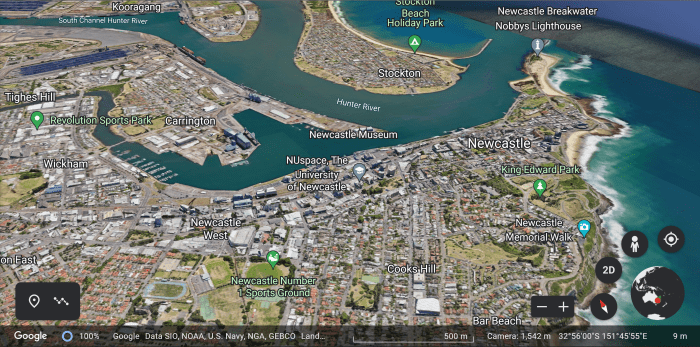
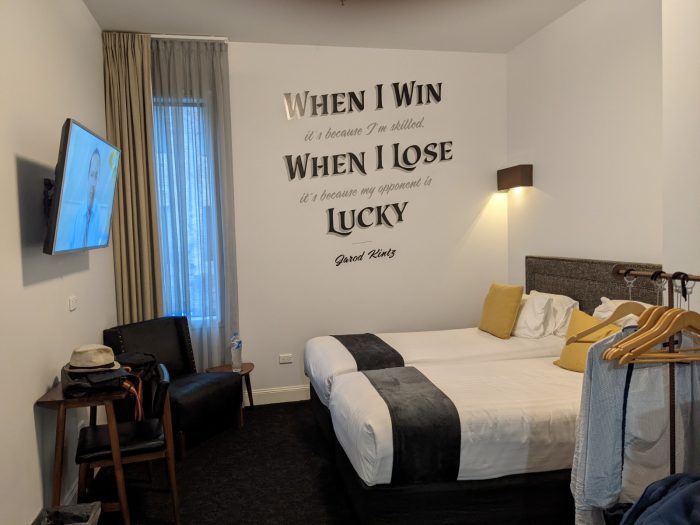
So beautiful